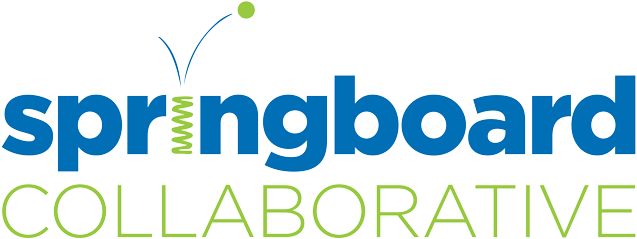Recently, our CEO and founder Alejandro Gibes de Gac spoke at the ASU+GSV Summit on a panel titled Unleashing the Untapped Teaching Potential within Families. Alejandro shared his abiding belief that parents’ love for their kids is the single greatest, and the most underutilized, natural resource in education. He sees that in his work every day at Springboard Collaborative, but he learned it first as a son. “My Puerto Rican parents escaped political persecution and came to the US seeking better educational opportunities for their kids. It didn’t take long in Carrollton, Georgia for my parents to realize that school didn’t serve poor families like ours. My sister and I excelled in spite of the school system, not because of it. ” Despite this, he shared a powerful story of how his parents tirelessly advocated for their children but were never treated as partners in their children’s learning and the school system approached his parents as liabilities rather than as assets.
Alejandro went on to emphasize that parents and teachers have a goal in common. They both want their kids to realize their potential, and they need each other in order to realize that goal. Collaboration doesn’t have to be complicated. Over the past decade, we’ve learned that, despite some of the barriers involved in getting parents and teachers to work together, it can be done more easily than most people think. We call it the Family-Educator Learning Accelerator (FELA), and it’s the playbook that consistently generates ~3 months of reading gains for PreK-3rd graders. We’ve open-sourced our materials so that anyone can use them.
Alejandro clearly outlined the FELA framework and how it can serve as an anchor to learning accelerators across subject areas. FELAs are five-to-ten-week cycles during which parents and teachers team up to help kids reach a learning goal. These cycles are built from six basic steps. None of them is rocket science, but in combination, their outcome is powerful.
Step 1: Build your team.
If you don’t have a bit of relational trust between families and educators, your efforts are over before they even start. Families can be wary when their child’s teacher suggests an intervention, but this needn’t be a problem. All it takes is a 20-minute trust-building conversation, whether it’s a home visit or a virtual session, to predict whether a family will successfully engage in the FELA goal-setting cycle.
Step 2: Find your starting point.
Families and educators need to be looking at the same data. In other words, all members of the team have to begin with a shared understanding of where a student is in their learning today. That understanding enables you to set a goal. Many teachers use their school’s assessment tools to find the starting point. Families can use Springboard Connect, a Web app that provides tips, resources, and reminders to support parents as reading coaches to their children.
Step 3: Set your goal.
The goal that you set for the student should be realistic, measurable, and within their abilities. We’ve learned the hard way that any goal you set has to be winnable within a five-to-ten-week window. Fewer than five weeks, and it’s just not enough time for the student to build a habit. Longer than ten weeks, and the finish line is so far away that it may as well not exist. Once you’ve set that goal, make a shared game plan.
Step 4: Practice, practice, practice!
First, students practice with their educators in the classroom. Second, students practice with their families at home (this is where the Springboard Connect app comes in handy), so that even if a parent has only 15 minutes a day, they can still be a confident reading coach to their kid at home. And third, the whole team practices together through a family workshop. For every hour that a teacher leads a workshop, parents have delivered about 25 hours of one-on-one support at home, unlocking a world of instructional time that lies dormant in too many school communities.
Step 5: Check your growth.
You measure progress if you help kids see what they accomplished relative to their goal. The easiest way to do this is by using the same assessment used in Step 2 and comparing the scores. Not only does this illustrate student progress, but it’s also a measure of family members’ effectiveness as reading coaches. (To target specific reading skills and track progress, again, we recommend the Springboard Connect app.)
Step 6: Celebrate progress together.
Honoring a quick win will crystallize habits for both educators and families. Educators recognize parents as co-teachers who’ve always been there, and that realization of an untapped resource becomes a mindset. Families are gratified by the experience of setting and achieving a goal with a child in such a short time frame. These feelings feed easily into a desired learning habit for educators, families, and especially students, even six months after the end of a short cycle. We’ve found that parents are still coaching their kids and reading for 22 more minutes per night than they were before the intervention.
Our recommendation to school systems is to do three cycles a year: a five-week cycle during the summer to replace a potential learning loss; a ten-week cycle in the fall once teachers have identified which kids are most in need of a FELA boost; and one more cycle in the spring as an end-of-year sprint to the finish line.
You don’t have to overcomplicate things to have an effective FELA, as long as you remember that short goal-setting cycles are what help you from week to week. It’s a simple, effective way to bring about collaboration that otherwise doesn’t happen often enough. We invite you to download our free toolkit to start exploring how FELAs can make a difference for your students. You can also get in touch if you’d like to explore a more robust partnership.

